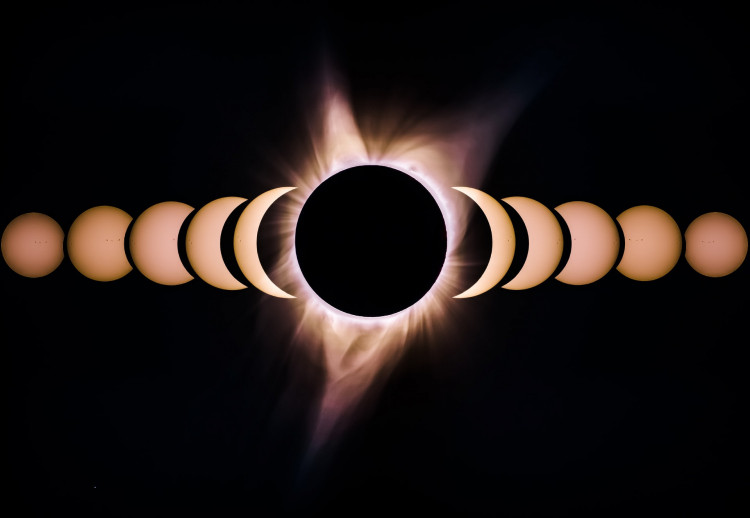The moon will almost fully obscure the sun in the first solar eclipse of the year - leaving a blazing ring of Earth's star visible Thursday.
According to the National Aeronautics and Space Administration, just a few places in Canada, Greenland and northern Russia will be able to see the "ring of fire" - also known as an annular eclipse.
A partial solar eclipse, in which the moon takes a circular "bite" out of the sun, will, however, be visible in more areas of the Northern Hemisphere, including parts of the eastern U.S. and northern Alaska, much of Canada and parts of the Caribbean, Europe, Asia and northern Africa, NASA said.
According to EarthSky, the complete annular solar eclipse will last approximately 100 minutes, beginning at sunrise in Ontario, Canada and traveling northward until the moment of greatest eclipse, around 8:41 a.m. local time in Greenland (6:41 a.m. EDT; 11:41 GMT) 10:41 UTC in northern Greenland and concluding at sunset in northeastern Siberia.
At each point along this course, the "ring of fire" phase, in which the moon covers 89% of the sun, will last up to three minutes and 51 seconds.
Solar eclipses occur when the moon passes between Earth and the sun, blocking some or all of the sun's light. The moon is far enough away from Earth during an annular eclipse that it is too small to block out the entire sun.
Instead, as the moon moves over the sun, the sun's outer edges remain visible from Earth as an annulus, or ring.
Because this week's eclipse will not include totality, you should avoid looking at it directly, even if you are wearing sunglasses. Instead, you'll require eclipse glasses or other protective equipment.
If the weather or your location prohibits you from watching the eclipse, watch it live at the Virtual Telescope Project beginning at 5:30 a.m. EDT (9:30 a.m. UTC).






